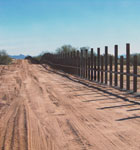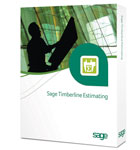At a Glance
Location
Garnerville, NY
Founded
1990
Employees
4 full-time
Specialties
Scenery and 3-D constructions for theater and corporate promotional use
Annual Sales
$500,000
You say you need a massive beer keg that shoots tennis balls? Or a giant eye that stares down at concertgoers? No need to panic. Just contact Capital Scenic, Inc. in Garnerville, New York.
The company was founded and is co-owned by Neil Shubert, president, and Richard Harrison, corporate secretary. The two had enjoyed many professional interactions in theater production for years, and in 1990 they formalized the relationship by forming their own company. Although painted backdrops; custom-fabricated scenery; and props for theater, TV, and film are a large part of the business, Capital Scenic also provides trade show booths, point-of-purchase displays, and sculptural elements for corporate events. “Our market niche is pretty broad,” Shubert says, adding that whereas many scene shops focus on a certain narrow niche, “we like to tackle anything that’s big, conceptual, and 3-D.”
The firm’s work has included a seven-foot replica of a Heineken draught keg—with an integrated ball-launching machine. “Heineken used it to promote the US Open,” Shubert says. “Spectators could swing a racket at tennis balls launched from the keg. If they knocked over a stack of actual keg cans, they won prizes.”
Top 5 Challenges of Scenery and 3-D Construction
1. The design itself is difficult because Shubert and Harrison must spend a lot of time rethinking submitted projects just to get the job.
2. Scheduling is critical, and it’s often hard to get clients to understand how long it can take to execute all aspects of a complex project.
3. Unusual materials require research into proper glues, acceptable paints and dyes, necessary synthetic and natural materials, and other elements.
4. Knowledge of dimensions is key because the things the company builds must break down small enough to fit through narrow passages.
5. The economy has been a hurdle because the firm is constantly asked to do more with less of everything.
For Dunkin’ Donuts’s 40-foot-long pink Christmas gift-wrapping station at Herald Square, Capital built a 10-foot-tall “latte” decorated with changeable logo-imprinted wrapping paper. (Thanks to a built-in smoke machine, the display even “steamed.”)
And, for Snapple Beverage Corp., Capital designed intricate promotional booths featuring simulated wood crates and floors as well as hand-painted logos on the awnings’ frilly edges.
Mutual Hardware in Long Island City, New York, is a key player in many of Capital’s projects. “They’ve specialized in all kinds of materials and products for the entertainment industry for over 75 years,” Shubert says. “They know what will work and what won’t. They’ve even improved existing designs and manufacture their own products.”
Projects tend to come in two flavors, Shubert says: “Designers who submit comprehensive plans for bids and clients who have rough ideas but aren’t sure how to proceed.” In either case, the team develops extremely detailed estimates. “We take it a little far,” Shubert adds, “but we like to be very precise. It helps ensure that we’ll end up close to the actual target.”
Of course, ongoing changes and logistical snags are routine in this kind of business, but Capital Scenic just rolls through them. “Lighting designer Mark Janowitz approached us to construct a giant green eye for My Morning Jacket’s latest tour, in support of its Circuital album,” Shubert says. “The cover features an antique radio’s tuning eye, and bandleader Jim James wanted that ominous image to dominate the stage. Mark drafted the image, and we spent weeks ironing out the details of materials, construction, and pricing. When he and James agreed on our plan, we set out to build it.”

The giant eye was destined for a heavy circular supporting truss, “but the truss was being built in Texas while we were building the eye. We couldn’t perform any test-fittings before its final assembly,” Shubert says.
The solution? Get shop drawings of the truss, overlay the eye’s drawings, determine the proper connection points, and cross your fingers. Why? Because the two pieces would be shipped independently to Tennessee for final assembly—with a very tight deadline and no room for errors. In the end, Capital Scenic’s efforts paid off, and the enormous eye has since peered down at the audience at every concert stop. ABQ



